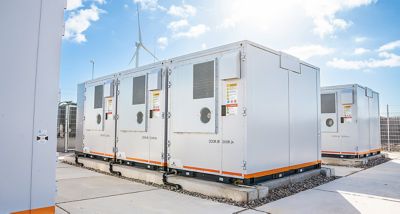ANSYS BLOG
November 21, 2023
Ansys at COP28: Simulation Supports Sustainability Innovation
Ansys will attend COP28, the United Nations Climate Change Conference, which takes place November 30 through December 12 in Dubai, United Arab Emirates. You might be wondering: Why would an engineering simulation software company go to a conference where global leaders meet to agree on climate change policies? After all, we’re not an energy producer, automaker, or aerospace manufacturer. That may be true; but our customers are and they understand why simulation is critical to sustainability.
Ansys customers from virtually every industry can use simulation to meet their sustainability goals. Companies in the energy sector are reducing greenhouse gas emissions, improving low-carbon energy alternatives, and optimizing operations with digital twins that are enabled by simulation and artificial intelligence (AI). Automakers are transforming into electric mobility companies, while also working to improve aerodynamics and reduce vehicle weight. The aerospace industry is exploring new propulsion and fuel storage solutions while implementing advanced manufacturing and model-based system engineering (MBSE). The high-tech sector is using simulation to design more energy-efficient electronics that are designed with material intelligence to improve e-waste recovery. And heavy industry is transitioning to digital workflows that rely on the industrial internet of things (IIoT) to optimize operations, save energy, and control pollution.

Simulation is Part of the Solution
As the global leader in simulation software, Ansys is well positioned to provide technology solutions that support and enable the sustainability goals of our customers across diverse industries. We have organized our sustainability-focused solutions into four pillars:
- Clean Environment solutions that help our customers filter out air pollution, including carbon capture, emission trace and control, water treatment and management, and ambient noise and dust reduction.
- Materials and Circularity solutions that enable customers to create, manufacture, recapture, sort, and reuse products for less waste.
- Energy Solutions that help drive the decarbonization of energy systems by supporting the transition to energy-efficient and carbon-free energy.
- Manufacturing and Operational Efficiency solutions that help optimize manufacturing and operational efficiency with digital twins and improve product robustness, durability, and safety.
Collectively Addressing Climate Change
Climate change has been called “the defining crisis of our time” by the United Nations because it threatens lives around the world. It must be addressed collectively — across all nations, industries, businesses, and individuals — and with urgency before the effects of climate change become irreversible.
To that end, many nations have committed to substantial reductions in their greenhouse gas (GHG) emissions in accordance with the Paris Agreement, which aims to curb global temperature rise in this century to well below 2o C (ideally to 1.5o C) and to achieve net-zero emission (NZE) in the second half of the century.
Simulation can help companies and countries achieve these goals. Simulation is already being used to invent tomorrow's solutions, but perhaps more importantly, it can be leveraged to help scale out existing solutions that are just now coming off the laboratory bench.
For example:
- CorPower Ocean uses Ansys software to design and verify its innovative wave energy converters, designed as 19-meter buoys that are tethered to the sea floor. A cluster of buoys can produce 10 MW to 20 MW of electrical energy. Multiple clusters can be linked — all sharing a common electrical transmission infrastructure — to deliver gigawatts of electricity.
- C-Zero uses Ansys software to develop a process for decarbonizing natural gas and transforming it into pure hydrogen, a more sustainable fuel.
- Wärtsilä uses Ansys software to simulate the thermoelectric and electrochemical behavior, along with transient heat transfer, of battery designs to optimize them for stability, reliability, operation costs, and susceptibility to degradation.
- Ansys collaborated with three companies as part of the Plastic Recycling in Stochastic Modeling (PRISM) Project, which aims to make it easier for recyclers and their customers to create viable recycled plastics that can be used in products.

A CorPower Ocean wave energy farm. Image courtesy of CorPower Ocean

Wärtsilä’s GridSolv Quantum is a fully integrated, modular, scalable energy storage solution.
These are just a few examples of many that show how companies can use the predictive power of simulation to innovate and scale ideas that can have an impact on sustainability efforts. That’s why we’re attending COP28. We want to show companies big and small, from every sector, how simulation can help the world combat climate change.
Connecting on Climate Change
Discovering and implementing an efficient means of innovative product design and operation — with minimal use of physical resources — is at the very heart of our vision of pervasive simulation. We have seen how simulation enables companies to save resources, energy, and emissions before products are ever built; and build more energy-efficient products and processes.

During the COP28 event, Ansys will take the stage in the Sustainable Innovation Forum on December 4-5 to share the sustainability benefits of simulation. We are looking forward to connecting with our customers, partners, and other interested parties during the event. If you are planning on attending, reach out to us – we’d love to connect, network, and collaborate!
Learn more about Ansys sustainability solutions for a better future here.